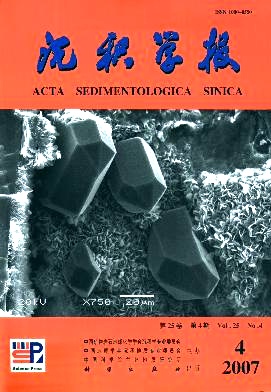Discovery and Its Significance of the Alternation of Mirabilite and Borax in Qiuli’nanmu Lake,Tibet
- Received Date: 1900-01-01
- Rev Recd Date: 1900-01-01
- Publish Date: 2007-08-10
-
Key words:
- mirabitlite /
- borax /
- clays /
- climatic change /
- saline lake /
- Tibet
Abstract: The Qiuli’nanmu Lake is a dried saline lake in central Tibet with many thick mirabilite layers.Saline minerals are suggested to be products of dry and cold environment compared with clays.A detailed mineralogical investigation was carried out with mainly thick mirabilite and thin borax layer and thin clay layer alternately.The stratigraphic variation in the mineralogy of salt lake sediments is an indicator of paleoclimatic fluctuations.Based on the variations of mineralogy, pollen and carbonate,it is suggested that the climate was warm and wet in 27.820.5 ka BP,cold and dry in 20.511.4 ka BP,warm and wet 11.410.1ka B,cold and dry in 10.17.5 ka BP,warm but changed frequently in 7.54.97 ka BP.The Last Glacial Maximum may be appeared in 20.517.5 ka BP.The warm pluses were at 17.517.1 ka BP,15.915.2 ka BP and 14.113.4 ka BP.The “8.2 ka BP cold event” appeared at 8.17.9 ka BP.Borax,a mineral appeared in low temperature,steady and shallow brine water,suggested the same environment during 27.84.97 ka BP in Qiuli’nanmu lake.The changes of summer monsoon led to the climatic conditions in the area. This work gives a mineralogical evidence for the view that Tibet is a sensitive area of climatic changes.
| Citation: | LI Minghui. Discovery and Its Significance of the Alternation of Mirabilite and Borax in Qiuli’nanmu Lake,Tibet[J]. Acta Sedimentologica Sinica, 2007, 25(4): 619-625. |






 DownLoad:
DownLoad: